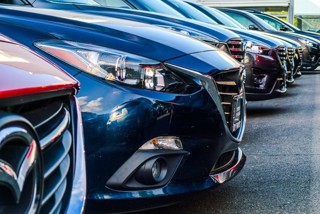By Philip Nothard
There has always been a common belief in the trade that a newer vehicle in competition with new product represents a smaller profit opportunity than an older car might.
But what is the actual relationship between a vehicle’s profit and its age?
We asked dealers whether they believe a used car’s gross profit margin is directly related to its age in terms of ‘date-registered’.
The response may surprise some.
Only 41% said they made less profit on newer vehicles than they potentially make on older ones.
Perhaps more surprising was that only 19% believe gross profit is directly related to the amount initially invested.
The rest gave a variety of factors impacting on margin, ranging from the sales process to the ‘if it’s bought right, then it’s already half sold’.
So the ‘top level’ view is fairly clear and we can now dig a little deeper into the detail underlying these views.
As the graph demonstrates, across the sectors carrying the more mainstream vehicles it’s evident that the margins between average advertised price and CAP Clean values are relatively level across the identified age banding.
There is also a clear decline, though, as the vehicle ages.
If we explore the MPV sector, at the initial 0-6 month age bracket a vehicle retains a gross margin (the
difference between advertised retail and CAP Clean) of £2,200, whereas the same for a vehicle in the equivalent sector at 24-36 months sees a drop to £1,500 – that’s around a third of its potential profit lost in two years.
We will all be familiar with comments like ‘it’s all about the sales process’, or ‘it’s because there are so many pre-registered cars around’.
However, what is evident is that across the sectors analysed, there is something going on in reality that 41% of the dealers we spoke to either did not recognise or are not seeing in their own businesses.
It is difficult to establish hard and fast reasons for profit margin variations but, of course, there is clearly an argument that the newer the vehicle, the less preparation it needs and also fewer opportunities for the consumer to haggle on price due to imperfections.
But certainly we should not forget the opportunity for both a retail part-exchange and a higher finance balance for additional finance commission represented by a newer car.
Working against the newer car, however, is often the fact that in many cases it will be less likely to be unique.
You will also inevitably be subject to price comparisons, new vehicle offerings and vulnerable to oversupply, if that is driven by the manufacturer.
But once you enter the older age vehicle sector – 24-36 months – the factors impacting margins change again.
You are now in another very highly competitive market place, with ever increasing consumer expectations for service and quality.
Here the challenge is finding that unique used car for a price that still allows for a reasonable profit. But this time there is always the ‘man around the corner’ who is prepared to work for less, has a more cost-efficient way of repairing faults and doesn’t have the overheads that you have.
Dealers are clearly split on this topic and it’s probably the case that nobody is right or wrong.
The reality is that everyone works to their own set of standards and policies and these largely determine an approximate retained profit margin, dependent on the type of operation and the brand you’re working with, where applicable.
What is clear is that age does make a difference.
But in the end, smart dealers will always have ways to buck trends and there is no doubt that sustainable profit margins are achievable with the right processes and skills in place, regardless of the age of a vehicle.


















Login to comment
Comments
No comments have been made yet.